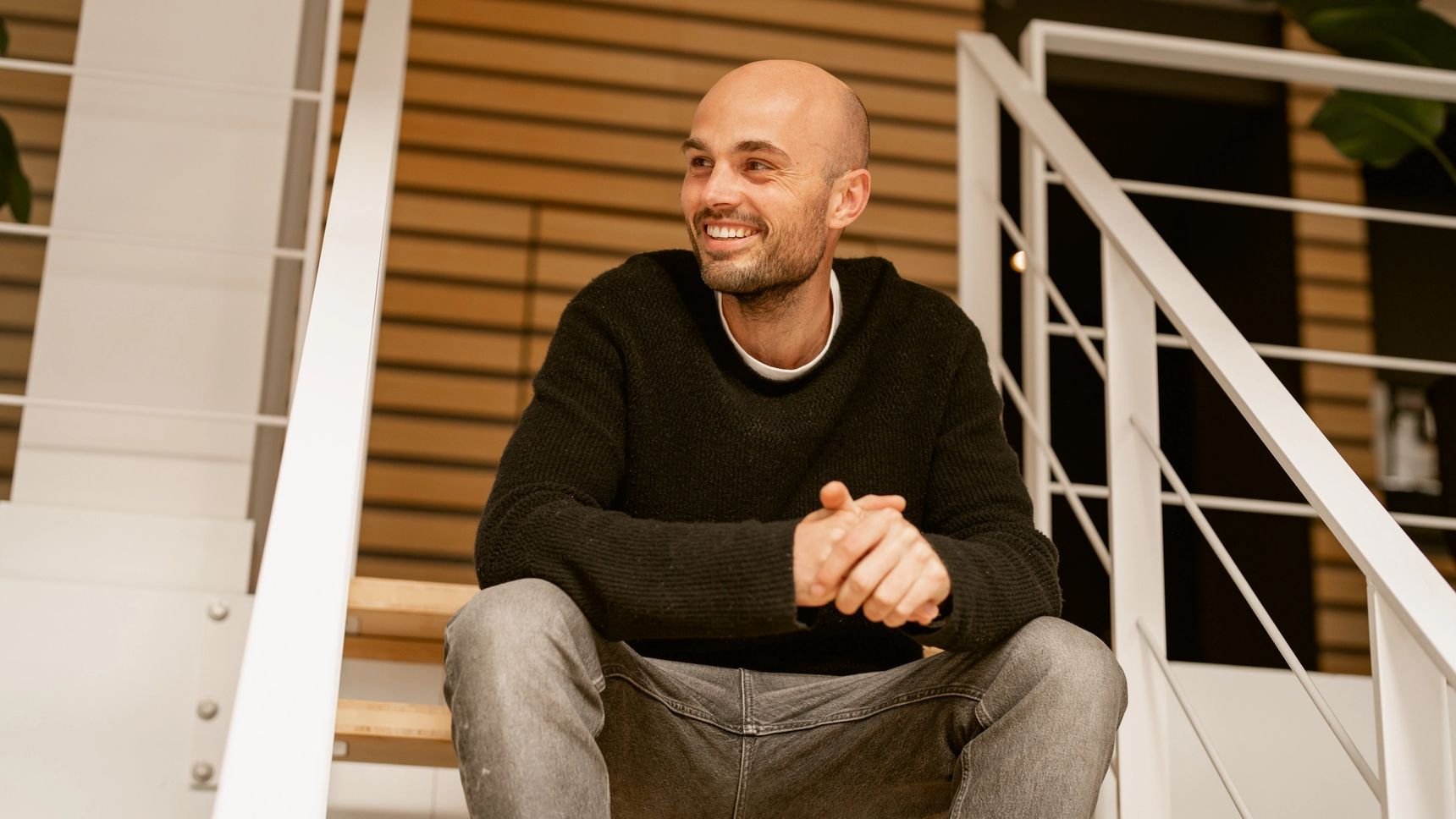
Martijn van der Does
Executive Design Director
13 June 2025, 8 minutes
From AI hype to impact: Turning friction into an improved workflow in 5 days
Introduction
For years, AI promised big changes but mostly delivered modest automation. That’s no longer the case. With faster computing, smarter tools, and an explosion of real-time data, AI has moved from experimental to essential, powering not just workflow improvements but entire business model shifts.
Yet, as possibilities grow, so do challenges. Privacy concerns, questions of data ownership, and fears around brand authenticity in auto-generated content are all on the rise. At the same time, generative AI tools are becoming increasingly commoditized.
In this environment, it is more a question of paraphrasing the famous "Ask not what your country can do for you, ask what you can do for your country" quote by JFK. Adopting this mantra to generative AI would translate to: “Ask not what AI can do for you, but start thinking about what only you can do with AI.”

In our way of working we don’t follow hype by implementing AI features, but focus on strategic impact. We help companies harness AI to build future-ready business models and not just better automated processes.
If used in the right way, this leads to more than a simple wave of new tools. It’s a moment of competitive transformation. And it starts with combining smart systems, strong design, and proprietary data into intelligent, scalable experiences.
We sat down with Martijn van der Does, Executive Design Director and partner at Hypersolid, to hear how he’s helping companies to make that happen.
Interview
Q: Martijn, what is your view on how companies can benefit most from AI?
As McKinsey recently reported, the adoption of AI in organizations has surged after several years of plateaued growth. But for me, the real question is always not if, but how AI is being adopted within organizations.
When people talk about AI, the term often gets applied to anything involving automation or data. But for us, the story is deeper. Behind every real breakthrough should be a team asking bigger questions. So instead of “What can we build?”, you should be looking at “Why do we want to build this?”, and “Who does it serve?”.
That shift from merely creating tools to creating for a purpose is where transformation begins. We’re not here to chase novelty for the sake of chasing novelty. We're here to help companies reshape how they operate, how they engage customers and, as a result, how they create long-term value. That might often start with AI, but it should always lead to a more competitive, future-proof business.
Martijn van der Does
Q: How do you translate that into something feasible for companies to start with?
We keep it practical. Our starting point is always where the company is right now, with regard to its tech stack, its team, and its ambitions. From there, we act as a strategic partner, tailoring solutions to their maturity level.
For us, it isn’t about offering a company the latest and trendy technology. It’s about building a roadmap that aligns with their business, scales with their business, and creates a framework of tools to facilitate that roadmap.
And it’s not just about improving efficiency. That’s part of it, but the bigger play is business model innovation. We want to help companies unlock entirely new ways of creating value, powered by their own unique data and capabilities. At the end of the day, that’s what gives them their competitive edge. We always put that competitive edge left, right, and center when working with our clients and zoom in on how we can help them transform in order to remain competitive.
Q: AI is such a broad topic. What specific areas are you focusing on?
We concentrate mainly on creating customer-centered AI experiences, or what we call IX (Intelligent Experience). These experiences are designed to help companies stand out in a world where content and tools are becoming commoditized. What can’t be copied is the way you, as a company, connect with customers in a meaningful, differentiated way.
That’s the front end. On the back end, we work with companies to identify and automate high-friction tasks that are slowing their teams down. Whether it’s a marketing department or a development team, we help them work faster and smarter, ultimately freeing up time for the kind of work that drives growth.
But beyond speed or savings, there’s a bigger strategic goal: turning internal workflows into proprietary data systems. The more you use these systems, the more insight you build. That becomes a competitive moat.

Q: Let’s elaborate on removing friction. How do you approach this with your clients?
GenAI offers many tools, but the real challenge is choosing the right one and knowing how and where to apply it. We often start in marketing and PR, because that's where content velocity is high and time pressure is constant. But every organization has untapped automation potential.
To start working together in a low-barrier way, we offer a 5-day discovery sprint to help companies take the first steps towards meaningful automation. This sprint always leads to a minimum viable product (MVP) that automates parts of their workflow and thereby creates immediate business impact.
This MVP is very important for us as we don’t want to end an exploration phase with just ideas and advice. An MVP delivers measurable ROI, proving that our way of working delivers business impact instead of innovation for the sake of innovation.
Q: What typically happens during the 5-day sprint?
It’s a hands-on, cross-functional sprint where we bring our design, tech, and data experts to the table from day one. Unlike traditional consultancies, we have the capacity to design and build in-house, which means we can move fast and stay focused. A sprint usually breaks down like this:
- Day 1 – We map your current workflows and uncover inefficiencies
- Day 2 – Together with our customers, we draft the right solution to remove this friction
- Day 3 – We concept the MVP and outline the data layer for the MVP
- Day 4 – We build and test the MVP
- Day 5 – We evaluate the ROI, and plan for implementation and rollout within the organization.
As you can see, we don't stop at delivering a working demo. Every sprint must end with a path to scale, so the MVP becomes a foundation for broader transformation within the organization.
The outcomes often include reduced operational costs, better use of team time, and the start of a proprietary data system.
Q: Can you share a real-world example?
Sure. One of our clients, who was a CMO, used voice notes on WhatsApp heavily to communicate with his PR agency on thought leadership content. But he was not satisfied with how they managed to translate these voice notes into articles.
To reduce friction in this workflow, we chose to build what essentially became a mini-AI agency. We had this agency working alongside their existing agency to compare both.
Our AI agency handled various flows while keeping its voice, data, and customers in mind. As a first step, we built a voice-to-text AI assistant that translated the voice notes into messages in his style. These notes then powered multiple agents that handled research and tone to provide more background and context to his ideas.
The end result was a thought leadership article, including visuals based on his voice notes. For him, this radically reduced the friction he felt before, and it felt like having a personal project manager in his pocket that he could speak to.
But behind the scenes, it's a scalable AI-powered layer that his whole team could use.
That MVP is now evolving into a core piece of their customer engagement strategy. The business impact was apparent. Not only because of the improved workflow for thought leadership, but also because of the savings related to not having to work with an external PR agency anymore.
Martijn van der Does
Q: Who should consider reaching out to you for this sprint?
It’s ideal for marketing leaders, innovation teams, but more so for anyone looking to future-proof their department. If you’re asking:
- “Can we scale without increasing headcount?”
- “Can we automate our routines and focus on the strategic?”
- “Can we turn our workflows into a competitive advantage?”
And the answer is "yes"; this sprint is for you.
By its nature, it not only helps you to start fast but it also guarantees you build smart from day one.
Q: How do you make automation successful for a marketing team?
It all starts with a clear and consistent value proposition and brand vision. Tools like ChatGPT can generate content without problems. But without direction, it’s just going to make noise instead of impact.
Marketing leaders still need to own and control the narrative. AI should amplify that voice, not create or replace it.
If done right, automation reduces time spent managing content and frees teams to focus on strategy, storytelling, and innovation.
Q: Why work with Hypersolid rather than developing in-house?
Like I said: as an integrated Technology & Brand Experience company, we will put all the different departments involved at the table from the start. From day 1, you will have specialists in design, data, and technology present to make sure all disciplines are considered and they are speaking the same language.
Additionally, I always stress the importance of working together with dedicated technology agencies when applying AI, because AI doesn’t stand still. If technology isn’t your core business, keeping up and integrating the right solutions is almost impossible. With us, you get access to a team that lives and breathes design, tech, data, and AI every day.
Thirdly, the way in which we work is not as a typical plug-and-play service provider. We act as a partner in building your next competitive advantage.
We don’t just optimize what exists or bring in a standardized solution. We start from your current situation and design, test, and deliver solutions based on that.
And although AI is a new and exciting technology, we can draw parallels to other technological developments from the past. At the end of the day, companies will have to realize that managing AI internally, without the knowledge and ability to execute of a technological company, is always going to be very difficult to scale.
Get in Touch